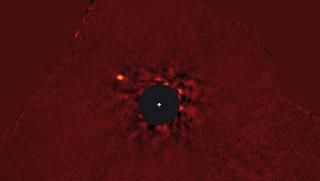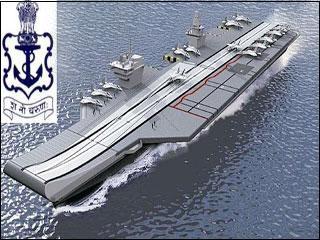
False color, near infrared image of the Kappa Andromedae star system as seen by the Subaru Telescope in Hawaii. Photo: NAOJ / Subaru / J. Carson (College of Charleston) / T. Currie (University Toronto).
WASHINGTON (PTI): Astronomers have discovered a new 'super-Jupiter' planet, 13 times bigger than Jupiter, the largest planet in our own solar system.
The planet orbits a star called Kappa Andromedae that is 2.5 times the mass of the Sun and is located 170 light-years away from Earth.
As the giant planet is larger than Jupiter, it has classified as a "super-Jupiter".
Astrophysicists at the University of Toronto said the object, which could represent the first new observed exoplanet system in almost four years, has a mass at least 13 times that of Jupiter and an orbit somewhat larger than Neptune's.
The host star around which the planet orbits has a mass 2.5 times that of the Sun, making it the highest mass star to ever host a directly observed planet.
"Our team identified a faint object located very close to Kappa Andromedae in January that looks much like other young, massive directly imaged planets but does not look like a star," said researcher Thayne Currie.
"Kappa Andromedae moves fast across the sky so it will appear to change position relative to more distant, background objects," Currie said.
Labelled by the researchers Kappa And b, it could be the first direct rendering of an exoplanet in two years and of a new exoplanet system in almost four years, ending a significant drought in the field.
In a single infrared snapshot, the tiny point of light that is Kappa Andromedae b is completely lost amid the overwhelming glare of the host star.
The extraordinary differences in brightness between a star and a planet are a primary reason why only a handful of planets have ever been directly imaged around stars.
"Although astronomers have found over 750 planets around other stars, we actually directly detect light from the atmosphere of only a few of them," said Currie.
"There are approximately six now. Kappa Andromedae b is one of them if our estimates for its age and mass are correct, which we think they are. The rest are only inferred directly."
The large mass of both the host star and gas giant provide a sharp contrast with our own solar system.
Observers and theorists have argued recently that large stars like Kappa Andromedae are likely to have large planets, perhaps following a simple scaled-up model of our own solar system.
The study was published in the Astrophysical Journal Letters.
 Previous Article
Previous Article Next Article
Next Article











The Indian Air Force, in its flight trials evaluation report submitted before the Defence Ministry l..
view articleAn insight into the Medium Multi-Role Combat Aircraft competition...
view articleSky enthusiasts can now spot the International Space Station (ISS) commanded by Indian-American astr..
view article